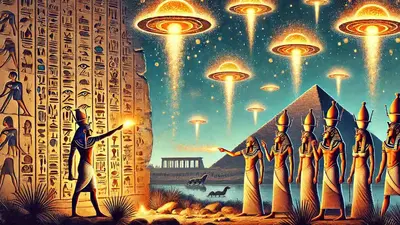
Advancements in SETI: Are We Getting Closer to Finding Alien Life?
SETI is a scientific endeavor aimed at detecting signs of intelligent life beyond Earth. It encompasses a range of projects and methodologies designed to search for electromagnetic signals that might indicate the presence of advanced extraterrestrial civilizations. The primary goal of SETI is to answer one of humanity's most profound questions: Are we alone in the universe?
What is SETI?
SETI involves using radio and optical telescopes to listen for signals from space that cannot be explained by natural astrophysical phenomena. This search is predicated on the assumption that other civilizations might use technology similar to ours to communicate across vast interstellar distances. SETI is conducted by several organizations worldwide, with the SETI Institute and the Berkeley SETI Research Center being two of the most prominent.

Achievements to Date
Since its inception, SETI has made significant strides in both technology and methodology. One of the most famous early efforts was Project Ozma in 1960, which used a radio telescope to scan nearby stars for signals. Although it did not detect any extraterrestrial communications, it laid the groundwork for future searches.
In recent years, SETI has leveraged advancements in technology to enhance its search capabilities. The SETI@home project, launched by Berkeley SETI, utilizes the spare processing power of millions of volunteer computers worldwide to analyze radio signal data. This crowdsourcing approach has dramatically increased the amount of data that can be processed and analyzed.
The SETI Institute has been at the forefront of using sophisticated techniques to improve search efficiency. One notable advancement is the SETI Ellipsoid method, which uses Gaia's distance measurements to refine search parameters, making it easier to target specific regions of space more likely to harbor signals. Additionally, the "coincidence rejection" method filters out terrestrial radio interference by comparing signals across multiple telescopes, significantly reducing false positives.

Current and Future Directions
SETI is currently experiencing a period of expansion and innovation. In 2023, the SETI Institute received a $200 million donation from the estate of Franklin Antonio, co-founder of Qualcomm. This funding boost is being used to enhance existing infrastructure, integrate advanced data analytics, and support ongoing and new research initiatives.
One of the most ambitious current projects is the Breakthrough Listen initiative, which aims to conduct the most comprehensive search for extraterrestrial civilizations to date. This initiative uses some of the world's largest and most sensitive radio telescopes, including the Green Bank Telescope in the USA and the Parkes Telescope in Australia, to scan the skies across a wide range of frequencies.
Looking forward, SETI researchers are increasingly focused on technosignatures, which are potential indicators of advanced technology rather than biological life. This includes investigating phenomena such as fast radio bursts (FRBs) and unusual light patterns that could signify the presence of large-scale technological structures or energy sources.

Conclusion
SETI is making significant progress through technological innovation, increased funding, and collaborative efforts. While the search has not yet yielded definitive evidence of extraterrestrial intelligence, the advancements in techniques and the expansion of search parameters provide hope that a breakthrough could be on the horizon. SETI's journey is a testament to human curiosity and the enduring quest to understand our place in the universe.
Recommended

